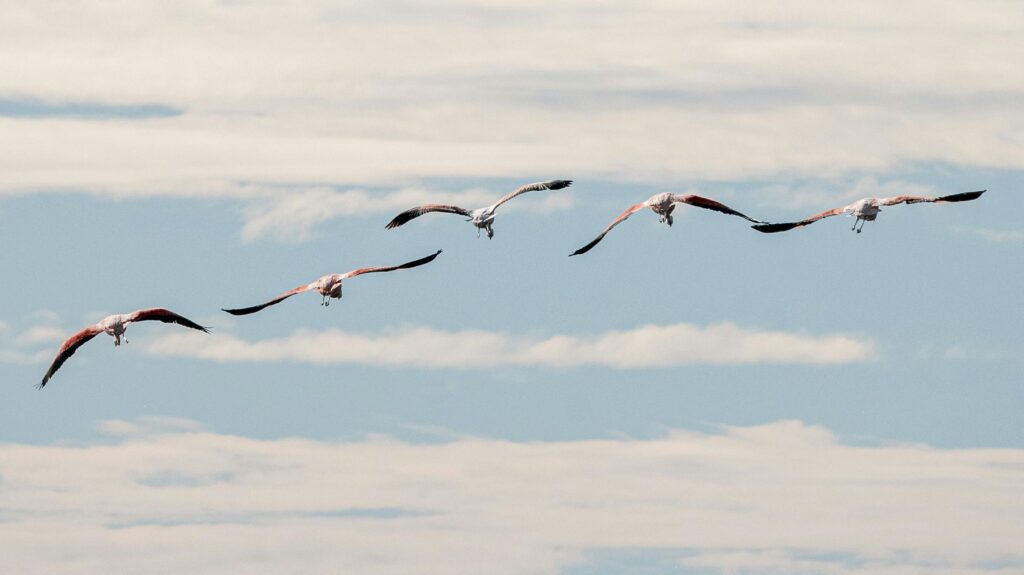The Great Feast

Birds Migration
Autumn is a season of movement and preparation. The heat breaks, the light shifts, and wildlife all over the world responds to the quiet warning in the air. Some animals begin to travel, some enter their final feeding frenzies, and others fight for the right to mate. It’s a season of urgency — not yet winter, but no longer summer. The wild knows what’s coming, and everything begins to change.
Birds on the Move
- Swallows and swifts leave Europe and North America, heading to Africa and South America, often flying thousands of kilometers in just a few weeks.
- Cranes from Russia and Scandinavia head to wetlands across southern Europe, the Middle East, and North Africa.
- Bar-headed geese make one of the highest migrations in the world, flying over the Himalayas from Central Asia to the plains of India.
- Sandhill cranes migrate from Alaska and Canada to staging grounds in the U.S. Midwest, eventually reaching Mexico and the southern U.S.
- Warblers, flycatchers, and cuckoos leave northern forests and head toward tropical Africa, guided by the stars and the changing winds.
Mammals in Motion
- Brown bears across Europe and North America gorge on berries, roots, and salmon — a phase called hyperphagia — to prepare for hibernation.
- Moose, red deer, and elk enter the rut. Males fight, call, and compete for mates, making them unusually active and vocal during daylight hours.
- Wolves and foxes increase hunting activity as cooler air improves stamina and prey becomes more mobile.
- Beavers reinforce dams and gather fresh branches for winter food caches under frozen ponds.
- Hedgehogs and dormice in Europe begin building fat reserves and insulated nests for the cold months ahead.
Insects on the Edge
- Monarch butterflies travel from Canada and the northern U.S. to their wintering grounds in Mexico’s mountain forests — a migration that can span 4,800 km.
- Dragonflies follow wind currents from India across the Indian Ocean to Africa — one of the longest insect migrations on Earth.
- Bees and wasps die off in most temperate zones, leaving only queens to overwinter underground or in trees.
- Insects in tropical areas shift to new generations or move deeper into foliage where humidity and temperature remain stable.
Cold-Blooded Disappearances
- Snakes and lizards in Europe and North America begin to seek out hibernation dens, often gathering in communal spaces beneath rocks or forest debris.
- Frogs and toads burrow into mud or leaf litter, lowering their heart rate and metabolism in preparation for cold.
- Turtles bury themselves in pond bottoms, slowing down until the thaw of spring.
Watching Autumn Wildlife
- Look for staging areas — lakes, wetlands, and coastlines filled with resting migratory birds.
- Forest edges and open fields are active with mammals gathering food and preparing dens.
- Highlands and open woodlands become stages for rutting deer, whose calls carry through the crisp air.
- Keep an eye on the skies — V-formations, sudden swarms, and solo stragglers all tell a story in motion.
Autumn is not just about leaves falling — it’s about instinct rising. Animals read the signals we can barely feel: temperature shifts, fading light, wind direction. They act because they must. And if we watch closely, we get to witness this great transition — before silence settles in for winter.
